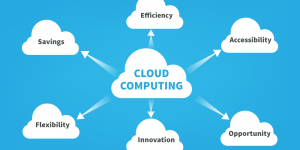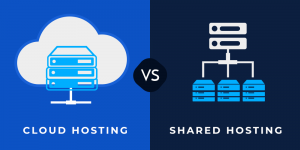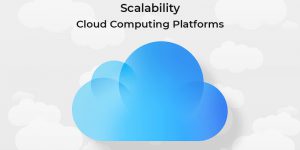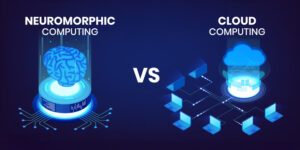
Technological advancements have been as transformative as cloud computing architecture. This isn’t just a buzzword; it represents a fundamental change that has redefined how we store, manage, and access data. The magic, however, lies in the layers of this architecture.
Beneath the sleek interfaces and user-friendly applications a complex web of components, each playing a vital role in making cloud computing what it is today. This article delves into the intricate layers that form the backbone of cloud computing, shedding light on the often hidden yet crucial elements that power our digital world.
What is Cloud Computing Architecture?
Cloud computing architecture is the structural framework that underpins the delivery of on-demand computing resources over the Internet. It encompasses a multi-layered system, from the physical Infrastructure of data centers to the user interface. This architecture provides the foundation for cloud services’ efficient and scalable operation.
At its core, cloud computing architecture comprises critical layers, including the physical layer, data storage, networking, virtualization, management, applications, user interfaces, security, and monitoring. These layers work together to deliver a wide array of cloud services, from Infrastructure as a Service (IaaS) to Software as a Service (SaaS). Understanding this architecture is pivotal for businesses and individuals seeking to harness the power of the cloud in a rapidly digitizing world.
Cloud Computing Fundamentals
Cloud computing is a transformative IT concept, delivering computing services over the Internet and liberating users from managing underlying Infrastructure. Its historical evolution saw emergence in the 21st century, with Amazon Web Services (AWS) catalyzing the modern cloud era in 2006, followed by Microsoft Azure and Google Cloud.
The key drivers for cloud adoption include scalability, reducing costs, and promoting agility and innovation. It enhances accessibility and collaboration while offering robust security and reliability, making it an indispensable strategy for businesses to stay competitive in today’s digital landscape. Cloud computing is about flexible, cost-efficient, and on-demand access to a spectrum of services, transforming how data is stored and processed.
Cloud Computing Service Models
Cloud computing offers diverse service models tailored to the distinct needs of businesses and individuals. The three main service models are Infrastructure as a Service (IaaS), Platform as a Service (PaaS), and Software as a Service (SaaS).
- Infrastructure as a Service (IaaS): IaaS provides the fundamental building blocks of cloud computing, such as virtualized servers, storage, and networking. Users gain control over these resources, allowing them to manage and configure the Infrastructure as needed. IaaS is ideal for businesses requiring a scalable, cost-effective solution for hosting their applications, websites, or development and testing environments. Its advantages include flexibility, scalability, and reduced capital expenses.
- Platform as a Service (PaaS): PaaS takes a step further by offering Infrastructure, a development platform, and a runtime environment. Developers can build, deploy, and manage applications without worrying about underlying infrastructure complexities. PaaS is well-suited for developers and organizations looking to streamline application development, as it offers tools and frameworks to accelerate the process. The advantages of PaaS include better developer productivity, faster time-to-market, and lower operating costs.
- Software as a Service (SaaS): SaaS is a ready-to-use software delivery model in which applications are hosted in the cloud and made available to users via the Internet. It eliminates the need for installation, maintenance, and updates, making it user-friendly and accessible on any device. SaaS is ideal for businesses seeking cost-effective, turnkey solutions for software needs, such as email services, customer relationship management (CRM), or office productivity tools. Its advantages encompass cost savings, accessibility, and automatic updates.
These three service models offer various choices, each catering to distinct use cases and delivering unique advantages, making cloud computing a versatile and indispensable resource for multiple applications.
Cloud Computing Deployment Models

Cloud computing provides a spectrum of deployment models tailored to diverse business needs. The primary deployment models include Public Cloud, Private Cloud, Hybrid Cloud, and Community Cloud.
- Public Cloud: Public cloud services are hosted and managed by third-party providers, offering resources to the general people over the Internet. It’s a cost-effective choice, ideal for startups, small businesses, and organizations looking to scale quickly without the burden of managing Infrastructure. It’s accessible, scalable, and efficient, although data security and compliance may be concerns for some.
- Private Cloud: These clouds are dedicated to one organization, offering the advantages of cloud computing within a more controlled and secure environment. It is suitable for strict compliance requirements of cloud computing in healthcare and finance sectors or large enterprises looking to maintain control over sensitive data and operations.
- Hybrid Cloud: Hybrid cloud integrates both public and private clouds, sharing data and applications. It’s a versatile choice for businesses with fluctuating workloads, enabling them to use public cloud resources for scalability while maintaining sensitive data on a private cloud. This model optimizes cost and flexibility.
- Community Cloud: A community cloud is shared by multiple organizations with similar interests, such as regulatory compliance. They allow cost-sharing and resource optimization among a select group. They are best suited for niche industries or collaborative projects.
These diverse deployment models empower organizations to align cloud resources with their unique requirements, balancing cost-effectiveness, control, scalability, and security. The preference relies on the precise requirements and objectives of the business.
Cloud Computing Architecture Layers
The layered architecture of cloud computing is a multi-layered construct, with each level contributing to the seamless functioning of cloud services. Let’s delve into these layers:
- Physical Layer: At the foundation are the hardware components and centers, the tangible Infrastructure that houses the servers, storage, and networking equipment, ensuring the reliability and redundancy crucial for 24/7 operations. This is a layered architecture of cloud computing
- Data Storage Layer: This layer encompasses storage services and technologies that provide efficient, scalable, and redundant data storage solutions vital for applications and services that rely on data retrieval. This is one of the essential layers of Cloud Architecture.
- Network Layer: Networking infrastructure and virtual networks form the backbone, connecting data centers, devices, and users, ensuring high availability, low latency, and robust data transfer. This is one of the essential layers of Cloud Architecture.
- Virtualization Layer: Virtual machines and hypervisors enable resource isolation and efficient utilization, making multitasking possible. This is an important layer of Cloud Computing Architecture.
- Management and Orchestration Layer: Automation and orchestration tools streamline provisioning, scaling, and managing cloud resources, enhancing efficiency and reducing operational overhead.
- Application Layer: It hosts the software applications themselves, whether they are web-based applications, databases, or other services, all readily accessible through the cloud.
- User Interface Layer: This is the user’s entry point, providing a user-friendly interface to access and interact with cloud services, fostering accessibility and user experience.
- Security and Compliance Layer: Security measures and compliance standards are woven throughout, ensuring data protection, identity management, and adherence to regulatory requirements.
- Monitoring and Management Layer: This final layer encompasses tools for managing and monitoring cloud resources, ensuring their health, performance, and cost-effectiveness.
These Cloud Computing Architecture Layers combine to create a robust, flexible, and scalable architecture that has transformed how we store, process, and deliver digital services, making cloud computing an essential part of modern technology landscapes.
Cloud Service Providers
A triumvirate of significant providers dominates the cloud computing landscape: Amazon Web Services (AWS), Microsoft Azure, and Google Cloud. Each offers a comprehensive ecosystem of cloud services, boasting its unique architecture.
AWS (Amazon Web Services): AWS, the pioneer in cloud computing, operates a vast global network of data centers. It employs a shared responsibility model, where AWS takes care of the physical Infrastructure while customers are responsible for securing their applications and data. AWS’s architecture is renowned for its reliability and scalability, with services covering computing, storage, databases, machine learning, and more.
Azure (Microsoft Azure): Azure leverages Microsoft’s extensive experience in enterprise solutions. Azure’s architecture is designed to seamlessly integrate with Microsoft products, including Windows Server, Active Directory, and SQL Server. It offers many services, emphasizing hybrid cloud capabilities and comprehensive compliance standards.
Google Cloud: Google Cloud capitalizes on Google’s expertise in data management and analytics. It emphasizes data-centric services, machine learning, and containerization. Google’s architecture is built on a global network, ensuring low latency and availability. Its open-source Kubernetes engine is a critical element in promoting containerization and orchestration.
These providers structure their cloud computing architecture to provide various services catering to diverse customer needs. While they share standard features, each offers unique strengths, and choosing the right one depends on the specific requirements of businesses and projects.
Benefits of Understanding Cloud Architecture

Understanding cloud architecture, with its intricate layers and components, yields a multitude of advantages for both businesses and individuals.
For Businesses:
- Cost Optimization: Knowledge of cloud architecture empowers businesses to optimize resource allocation, reducing unnecessary costs while ensuring scalability to meet demand.
- Security Enhancement: A deeper understanding of cloud security layers allows businesses to implement robust measures and ensure data protection.
- Efficiency and Performance: Proficiency in cloud architecture enables streamlined management and orchestration, improving efficiency and application performance.
- Innovation: With a grasp of cloud technologies, businesses can innovate rapidly and efficiently, deploying new applications and services.
- Agility: Cloud architecture knowledge facilitates adaptability to changing market dynamics, ensuring quick responses to evolving customer needs.
For Individuals
- Career Opportunities: Understanding cloud architecture is a valuable skill, enhancing career opportunities in IT, cloud engineering, and related fields.
- Personal Data Management: Knowledge empowers individuals to make informed choices about their data and services.
- Cost Savings: Individuals can make cost-effective choices regarding personal cloud services and data storage.
- Digital Literacy: Cloud architecture comprehension contributes to digital literacy, fostering confidence and proficiency in the digital realm.
Also Read: Cloud engineer vs Cloud architect: Which Is Better For You?
Understanding cloud architecture is not just a skill; it’s a strategic advantage that enables businesses to thrive in the digital age and individuals to navigate their digital lives more effectively.
Challenges and Considerations in Cloud Computing Architecture
Cloud computing, while revolutionary, presents several challenges and considerations that businesses and individuals must address:
- Security Concerns: Protecting data in the cloud from cyber hazards and data violations is a paramount challenge. Encryption, access management, and routine safety audits are essential.
- Compliance and Data Governance: Meeting regulatory requirements (e.g., GDPR, HIPAA) in a cloud environment can be complex. Comprehensive data governance policies and compliance monitoring are necessary.
- Downtime and Reliability: Cloud outages can disrupt services. A multi-cloud or hybrid approach and redundancy planning can mitigate this risk.
- Data Transfer and Bandwidth Costs: Moving data to and from the cloud can be expensive. Implement data optimization and bandwidth monitoring strategies.
- Vendor Lock-In: Avoiding complete dependence on one cloud provider is crucial. Ensure compatibility and consider portability when choosing services.
- Cost Management: Cloud costs can escalate without proper oversight. Implement cost monitoring, budgeting, and resource allocation strategies.
- Data Privacy: Ensuring data privacy and sovereignty when using global cloud providers is essential. Use region-specific data centers when necessary.
Tips for Addressing Challenges:
- Prioritize security with strong access controls and encryption.
- Develop transparent data governance policies.
- Plan for redundancy and failover to ensure high availability.
- Use cost management tools and adopt a pay-as-you-go approach.
- Implement a multi-cloud or hybrid strategy for flexibility.
- Regularly review cloud service agreements and understand exit strategies.
- Stay informed about regulatory changes and compliance needs.
Addressing these challenges and considerations demands a proactive approach, focusing on security, compliance, and cost management, to reap the full benefits of cloud computing while mitigating potential risks.
Case Studies
Real-world Implementations of Cloud Computing Architecture
- Netflix: Netflix, a pioneer in cloud adoption, leverages Amazon Web Services (AWS) to host its streaming service. Using AWS’s vast Infrastructure, Netflix can scale its service to meet global demand while delivering high-quality streaming content. This cloud architecture enables rapid content delivery, auto-scaling, and enhanced user experience.
- NASA’s Jet Propulsion Laboratory (JPL): JPL utilizes Microsoft Azure to manage and analyze vast amounts of data from various missions, including the Mars Rover. Azure’s cloud architecture provides JPL with the computational power required for data analysis and sharing insights across the scientific community.
- Airbnb: Airbnb combines Amazon Web Services and Google Cloud Platform. This hybrid approach allows Airbnb to manage massive data while maintaining redundancy and disaster recovery measures.
These case studies demonstrate how cloud computing architecture empowers diverse organizations to achieve scalability, efficiency, and flexibility in serving their unique needs and objectives.
Future Trends in Cloud Computing
As cloud computing continues to grow, several arising technologies and trends are shaping its future architecture:
Edge Computing: Edge computing, which processes data closer to the data source, is gaining prominence. This decreases latency and allows real-time applications, making it a vital component in IoT and 5G networks.
Serverless Computing: Serverless architectures, where users focus on code while cloud providers manage Infrastructure, are on the rise. They offer cost-efficiency and scalability without the burden of server management.
Quantum Computing: Quantum computing’s potential to solve complex problems will require cloud providers to offer quantum computing services, ushering in a new era of computing capabilities.
Related Blog: Explore Best Quantum Computers in the World
Hybrid and Multi-Cloud: Organizations increasingly adopt hybrid and multi-cloud strategies, ensuring flexibility and redundancy while optimizing cost and performance.
AI and Machine Learning Integration: Cloud providers integrate AI and machine learning capabilities into their services, enabling businesses to derive insights and automation from their data.
Also Read: The What, How, and Why of Artificial Intelligence and Machine Learning
These trends indicate that cloud computing architecture will continue to adapt and provide innovative solutions to meet the demands of an increasingly digital and data-driven world.
Conclusion
In the realm of technology, understanding cloud computing architecture layers is akin to having the keys to a digital kingdom. We’ve embarked on a journey through the layers of this dynamic landscape, from the tangible Infrastructure at the physical layer to the user-friendly interfaces. Each layer, intricately interwoven, serves a unique purpose, enabling businesses to harness scalability, individuals to access information effortlessly, and organizations to drive innovation.
Cloud architecture isn’t merely a framework; it’s a blueprint for the digital future. As we conclude this exploration, we’ve unveiled the interconnected layers that underpin the magic of cloud computing, demonstrating how this knowledge empowers us to navigate a swiftly evolving digital universe with confidence and competence.






